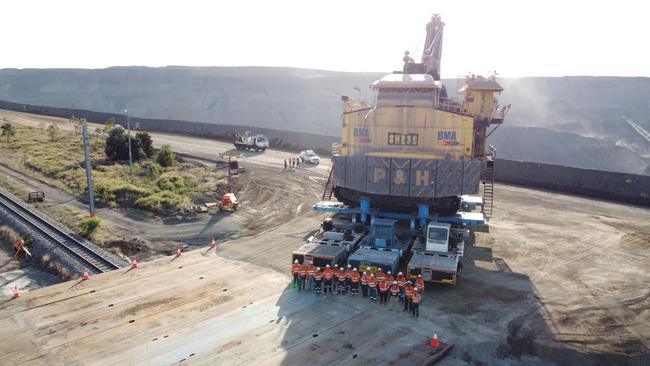BHP paid $30bn in dividends to shareholders over past year, instead of chasing deals: Robert Gottliebsen


While this is not a new situation, it has been brought into focus by the merging of the two BHP corporate arms. An acquisition costing, say, $A50bn would almost be a snack for The Big Australian because it can be funded by low-cost debt.
A more expensive target of, say, $A100bn might require equity but it would be an easy process to raise the money. Few other companies in the world so financially dominate an industry that they have a full menu of potential targets.
Yet BHP, at least to date, has chosen not to use its financial muscle and instead in just over 12 months has paid its shareholders an incredible $A30bn in three dividends (including the latest interim), which represents a return of around 13 per cent on the current market capitalisation.
These enormous BHP dividend payments have contributed to the liquidity in the Australian securities market.
But why hasn’t BHP used its enormous cash and profit generation to snap up a bargain?
Firstly, its main product iron ore is off the table because of BHPs dominant world position, and it is not chasing an increased exposure to metallurgical coal.
The company’s potential targets are copper, nickel and potash. Copper and nickel top the list because they benefit from the looming electrification and battery boom.
BHP has so far rejected another electrification beneficiary, lithium, because there is not enough difference between the lowest and highest cost producers. When investing in boom times BHP is looking for low-cost producers where there are a large number of high-cost producers in the market – in such a situation if there is a slump the high-cost producers get out of the market and longer term the low cost producers benefit.
When all the major players have similar cost structures, wars of attrition can develop. Fascinatingly Rio Tinto has taken a different view and has made a major acquisition in lithium, obviously expecting the market to go much higher.
So far BHP has not found a major available copper or nickel target that meets its investment criteria. On the financial side there are also shareholder benefit concerns when BHP issues equity at current share prices. Annualising the latest half yearly profit, (as a mathematical calculation not a forecast) BHP’s continuing operations (excluding oil) are earning at an annual rate of more than $A5 a share which means its price earnings ratio is less than 10. This is a very low figure.
Moreover, BHP’s interim dividend at an annual rate comes in at around $A4.20 a share. When the franking credit benefit is added, that dividend rate delivers a yield to BHP shareholders of above 10 per cent.
Given the token interest rates on fixed interest markets to have our Australian largest company yielding over 10 per cent and being priced at less than 10 times earnings tells us that the market believes that the current prices for iron ore, coal and perhaps copper are not sustainable.
The market has had this view for some time and so far, has been wrong because China can’t afford to slow down dramatically for social reasons. As long as China maintains strong investment rate the iron ore price stays high.
But any board with shares priced at such a low price earnings ratio will be reluctant to use their shares in a take over for fear of a watering down share holder value.
Indeed, BHP has a series of clear publicly announced criteria to ward against any such strategy.
So, until a major very attractive acquisition appears (and no doubt BHP will look hard at potash) the company has been turning to smaller prospects with a view to buying into promising developments at an early stage. The most prominent of these thrusts was its bid for the Canadian nickel prospect Noront where BHP was pitted against Andrew Forest’s Fortescue.
When BHP entered into the auction the board set a limit as to how much it would pay and when Andrew Forest bid around $A550m it exceeded that limit and BHP withdrew.
Instead, it took a higher political risk strategy in Africa. BHP agreed to subscribe $A140m (in two steps) for an 18 per cent interest in the Kabanga development in western Tanzania, which is one of the world’s biggest nickel sulphide deposits.
If the development proceeds as expected BHP is likely to move increase its equity. Part of the Kabanga development is a possible breakthrough in leaching nickel ore bodies. Included of BHPs $A140m investment is $A14m allocated to further developing this process. If it works then the leaching technology may have global implications because it substantially reduces the carbon in metal production. It also has possible implications for a substantial expansion of BHP’s Olympic Dam copper deposit.
Nevertheless, it seems strange to see the world’s largest mining company looking at smaller operations like Noront and Kabanga that can grow rather than using its market muscle to make major acquisitions. It is the new BHP.







With a market capitalisation approaching $A250bn and virtually no debt BHP has the financial ability to buy any mining company in the world.